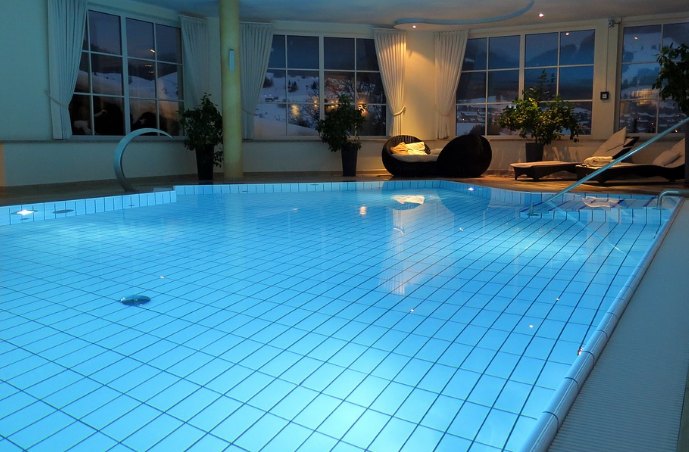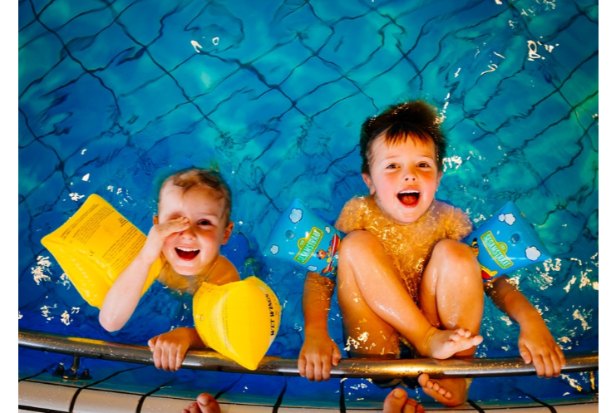What Is a Good Size Swimming Pool – How to Choose
The size of a swimming pool is just the beginning: there are countless types and shapes of pools. You must take into account a variety of pool features, including the depth requirements, surface finish, tile, steps, and diving boards, to name a few. You must think carefully about a number of fundamental issues before exploring those options.
What is a Good Size Swimming Pool? Key Considerations
When we have an idea, we frequently daydream. We support enthusiastic creativity, but we want to help you realize your vision. Two of the most common questions we get are, “What size pool would be ideal, and how much would it cost?” Let’s explore the typical elements that determine the ideal pool size for your requirements.
Space
Check your local residential pool requirements and regulations first to determine your options. These vary from place to place, and even from neighborhood to neighborhood.
The size of your yard presents the next major constraint on pool size. Urban areas are better suited for smaller pools, while expansive properties are ideal for larger pools. Some people would rather not have any grass and would like the pool to take up as much space as possible.
Even if it’s not grass, you should think about what else might fit in the area. Entertainment areas, fire pits, seating areas, and outdoor kitchens are examples of additional features. If you allocate space for both aquatic and terrestrial recreation, the possibilities expand.
Surroundings
Your pool’s size may be restricted by yard restrictions or made more expensive overall. Other potential restrictions include property lines, landscaping, and underground utilities.
If you already have a patio, decide if you want to expand on it or create a new one from scratch. Your outdoor space should be elevated and enhanced by your pool and deck. Additionally, your pool’s appearance should complement that of your house. The design must appear seamless, as if the pool and its surroundings were always there.
Budget
Consider crunching the numbers after generating general ideas for pool size and surrounding options. In addition to the pool’s size, additional features like a deck, spas, safety features, and water features also raise the price.
The size of your swimming pool affects how much maintenance will cost. The simple part is sweeping up the leaves. All pools need to be cleaned on a regular basis, but the bigger the pool, the longer the cleaning process will take. These include filters, vacuums, covers, and chemical balancing and treatment. Your best course of action is to strike a balance between utility, appeal, and maintenance.
Purpose
What size pool would be ideal? The specific reason for your desire for the pool may be helpful. for amusement, fun, or leisure? To burn off some energy? To look good? Perhaps a mix of all of them?
Determining the ideal pool size requires consideration of the activities the pool will support. Recreational pools typically have fewer people swimming in them and are shallower, allowing for games and wading (unless your recreations require more people or space in which case they will vary).
A pool might be something you want for exercise. Long rectangle-shaped pools with sufficient depth for lap swimming are one option, as are smaller ones with jets to provide resistance for swimming against the current.
A stunning backyard with a classy pool and waterfall is all that some home owners want. Others want to build a vacation spot for their kids and grandchildren, adding slides, grottos, sprays, and beach access points.
After deciding how you plan to use the pool, you can choose the appropriate pool size to meet your needs. Work with a skilled pool builder to analyze your space and create the perfect pool.

Guests
When you are wondering, “what is a good size swimming pool?” ask yourself, who will use your pool? The people who live with you will probably use the pool the most. The number of potential visitors grows as each neighbor spreads word that your yard will soon have a pool.
Consider age groups first. You have more size flexibility when hosting adults-only visitors. If you’re expecting young visitors, it’s a good idea to provide a pool with a shallow wading area or a beach entry. To accommodate all visitors safely, shallow to deep pools will have size requirements. Keep in mind to provide for visitors with accessibility and mobility issues. Ladders and fencing are useful additions that serve as safety precautions.
Now consider how many visitors you might invite. What might you need to accommodate in terms of minimum and maximum?. These are the standard sizes based on the number of guests:
- A pool that is 18 feet by 36 feet can be comfortably shared by six to eight people. The size of the pool allows for room for games and larger groups.
- A 16-by-32-foot pool could accommodate five people or fewer. Swimming and casual usage are both possible in this pool size.
- A smaller, 14 feet by 25 feet pool can be enjoyed by three or fewer people. There is still enough space to float, throw water-safe toys, or simply unwind.
Climate
No matter its size, the frequency of use of your pool will depend on the local climate. How much you decide to spend on the size of your pool may depend on how many swimmable days are available. A year-round pool season may be possible in warmer climates. Pool use is restricted to certain times of the year in colder climates or during seasonal temperature changes. Cost is directly impacted by keeping the water at an appropriate, comfortable temperature throughout the year. The impact will change depending on the size of the pool.
Type Or Shape
A swimming pool’s size can vary depending on its type or shape. Custom pools are available in a variety of sizes and shapes, though the two most common are rectangular and L-shaped.
Swimming pools in an L-shape give the yard interesting shapes and allow for creative design. Modern homes frequently have geometric pools with their straight, sharp edges. In-ground or above-ground circular pools are typically more affordable. Free-form pools are interesting because they don’t adhere to any set guidelines for shape. They might be completely abstract, or they might resemble a cloud or a symbol.
Grecian pools are squares with rounded corners that are frequently surrounded by attractive decks and landscaping. Roman pools are also rectangular, but they have rounded ends. Although entertaining, the price will vary greatly depending on the shape. Always consider your budget and any additional features you’d like to see in your design.
Preference
The previously mentioned sizes are typical or advised. In the end, the size of the swimming pool that is appropriate for you will depend on your personal preference (within the limitations that already exist). Always go back to the reason you built your pool and how dedicated you will be to maintaining it. You can hire a custom pool designer once you’re sure of the size and function.
What to Consider before Having Your Own Swimming Pool?
How Big is Your Living Space?
Different backyards have different size requirements, and not every pool has the same requirements. The size of the pool you can install and any other design elements you want to incorporate will therefore be determined by the available space in your backyard. However, not every home has a sizable enough outdoor area to support a variety of pool sizes. Therefore, it’s crucial to make the most of your living space when designing your swimming pool project. You can tailor your project in accordance with our wide range of pool sizes.
How Often You Will Use Your Fiberglass Pool?
The usage frequency is another aspect to take into account. This will affect how much upkeep your pool requires. When choosing the appropriate pool size for your needs, it’s important to take maintenance into account. People, pets, insects, and other debris can render your pool unusable. You will have longevity and stability with an in-ground fiberglass swimming pool. You can maximize the use of your pool while reducing pool maintenance by using sturdy and secure materials like fiberglass rather than concrete.
What Kind of Budget Do You Have to Work With? Do You Need Financing?
When deciding how big of a pool project to undertake, long-term financial planning is frequently crucial. Pools are expensive to install, run, and maintain, so there is no magic number to use when figuring out how to budget for long-term pool maintenance. The best way to estimate your costs is to consider your usage, location, and a maintenance schedule you’ve agreed upon with your builder. General pool upkeep, covers, fencing, chemicals, cleaning, and more are additional costs to take into account. Every element of the listed pool requirements will be impacted by your pool’s size. Because of this, you should know what pool size or design will work best for your budget. There are numerous finance companies that offer financing specifically for outdoor living and fiberglass installation projects, which can help you reduce your upfront costs for your pool project. In the long run, this kind of financing can give you the pool you want while freeing up cash for maintenance and other pool-related expenses.
Final Words
It might not be as simple as you once thought to choose the ideal swimming pool size and shape for your family. There are many factors you must take into account, which may initially seem overwhelming. An expert pool installer can be of assistance to you in this situation. They can assist you in determining the best pool size to take into account all the factors we covered in this blog post and in helping you explore your options for swimming pool models based on your needs. Even so, we can recommend a dealer to you if you’re still unsure who to contact. We work with many excellent dealers all over the USA. You could be swimming in the ideal-sized pool to suit your needs this summer if you get in touch with us today so we can put you in touch with a Barrier Reef Fiberglass Pool dealer.
FAQs
What is the Minimum Size of Swimming Pool for Residence
Space required: The smallest swimming pool that can be constructed can have a size of 150-200 square feet (water area), which can easily be built in an area of 500 square feet. 3. Swimming pools come in two different varieties: constructed and ready-made.
What is the Standard Swimming Pool Size for Resort
Blue PVC Resort Swimming Pool, For Hotels/Resorts, Dimension (Length X Breadth): 40 Ft X 20 Ft.
What is the Commercial Swimming Pool Size
Government institutions like communities and schools run commercial or public swimming pools. The size and volume of it could be ten times greater than that of private swimming pools. Competitive swimming pools, for example, are usually 50 meters in length by 23 meters in width.
